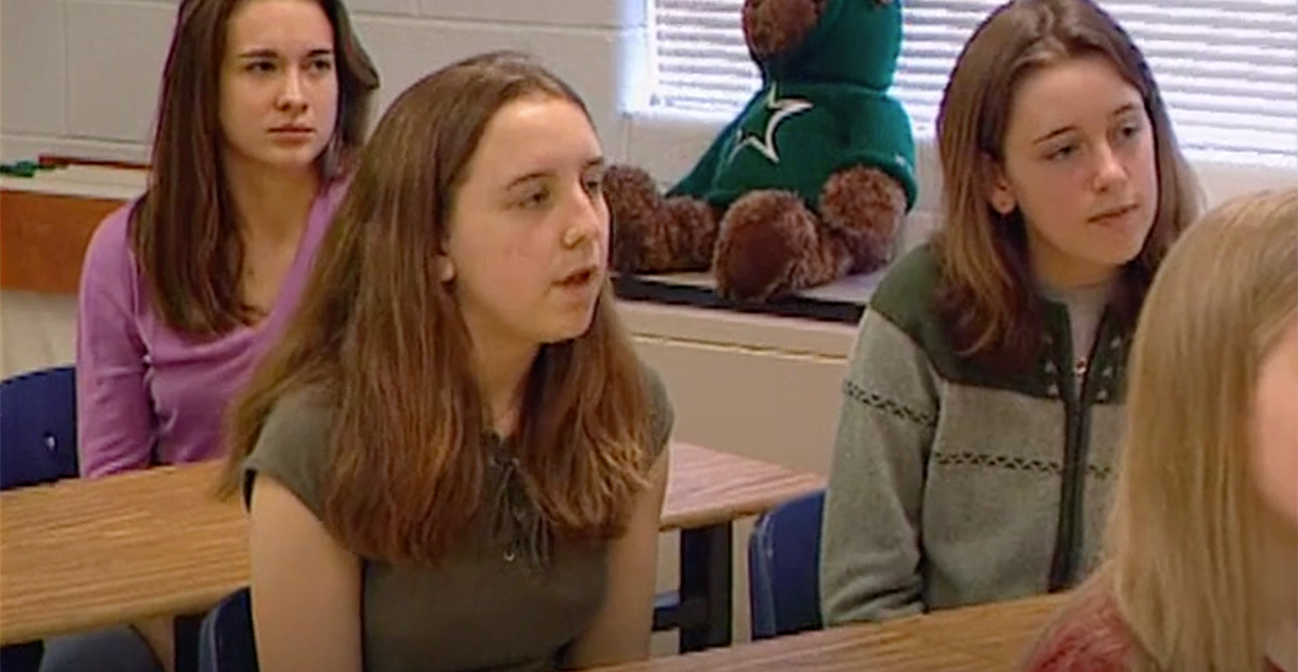Join us for conversations that inspire, recognize, and encourage innovation and best practices in the education profession.
Available on Apple Podcasts, Spotify, Google Podcasts, and more.

CLASSROOM AT A GLANCE
Teacher
Ghislaine Tulou
Language
French III
Grades
9-12
School
McLean High School, McLean, Virginia
Lesson Date
March 21
Class Size
26
Schedule
94 minutes every other day
In this lesson, students discuss community life at home and abroad and practice new grammatical structures. First, students share what they like about their community, then read an article about a French-speaking Canadian community and discuss what activities they would do if they visited there. Next, students learn the conditional verb forms using worksheets, and follow up with discussions about communities. Finally, Ms. Tulou introduces a children’s book that uses the conditional tense, and students practice writing sentences similar to those in the book.
Communication: Interpersonal, Interpretive, Presentational
Cultures: Products, Practices
Comparisons: Culture
Connections: Making Connections
authentic materials
Authentic materials are resources that have been developed specifically for native speakers. These include print, audio, and visual materials.
heritage speaker
A heritage speaker is a student who is exposed to a language other than English at home. Heritage speakers can be categorized based on the prominence and development of the heritage language in the student’s daily life. Some students have full oral fluency and literacy in the home language; others may have full oral fluency but their written literacy was not developed because they were schooled in English. Another group of students — typically third- or fourth-generation — can speak to a limited degree but cannot express themselves on a wide range of topics. Students from any of these categories may also have gaps in knowledge about their cultural heritage. Teachers who have heritage speakers of the target language in their class should assess which proficiencies need to be maintained and which need to be developed further. See also native speaker.
negotiation of meaning
In this process, teachers and students try to convey information to one another and reach mutual comprehension through restating, clarifying, and confirming information. The teacher may help students get started or work through a stumbling block using linguistic and other approaches.
thematic units
Thematic units are designed using content as the organizing principle. Vocabulary, structures, and cultural information are included as they relate to the themes in each unit. For an excellent example of theme-based units, see the Nebraska Foreign Language Education Web site in General Resources.
Reflect on Your Practice
As you reflect on these questions, write down your responses or discuss them as a group.
Watch Other Videos
Watch other videos in the Teaching Foreign Languages K-12 library for more examples of teaching methodologies like those you’ve just seen. Note: All videos in this series are subtitled in English.
Routes to Culture (Spanish) illustrates students expanding conversation beyond sentence level, and Chicken Pox (French) demonstrates the reading of children’s literature with kindergarten students.
Put It Into Practice
Try these ideas in your classroom. Where it’s not already evident, reflect on how to adapt an idea that targets one performance range for application to other performance ranges.
World-Readiness Standards for Learning Languages
The World-Readiness Standards for Learning Languages create a roadmap to guide learners to develop competence to communicate effectively and interact with cultural understanding. This lesson correlates to the following Standards:
Interpersonal Communication
Interpretive Communication
Presentational Communication
Relating Cultural Practices to Perspectives
Relating Cultural Products to Perspectives
Learners use the language to investigate, explain, and reflect on the relationship between the products and perspectives of the cultures studied.
Making Connections
Cultural Comparisons
Lesson Materials
Bojanowski, Nathalie-Anne. Si j’étais un animal. Les editions du Raton Laveur. Quebec, Canada: Saint-Hubert, 1997.
Le Conditionnel – Oral Exercise (PDF, 16 K)
A worksheet featuring questions that students answered to practice the conditional tense and to compare their preferences with classmates (Includes English translation)
Curriculum References
Virginia Standards of Learning (SOL) and Testing for Foreign Language
Fairfax County Program of Study
Ghislaine Tulou’s Additional Resources
Web Resources:
City of Helsinki, Finland
Discusses the quality of life and other cultural aspects of Helsinki, Finland (Available in English, Finnish, French, German, Russian, and Swedish)
Lyon and Its Region
A Chamber of Commerce site that discusses the quality of life in Lyon, France, and offers a list of organizations that will help foreigners adapt to the city and make contacts with locals (Available in English, French, and Japanese)
University of Texas French Grammar Guide
Grammar lessons followed by interactive exercises (some with sound files), a French dictionary, and quick reference sheets